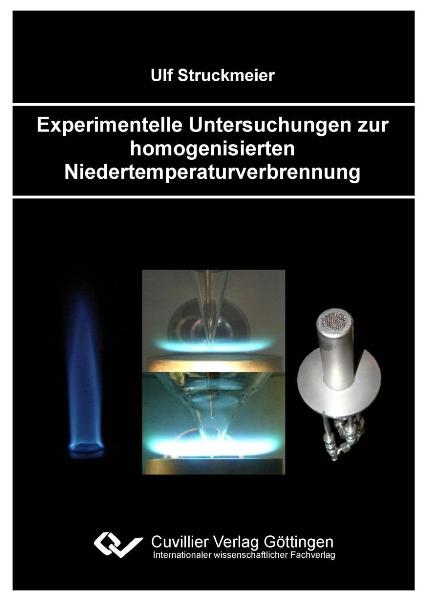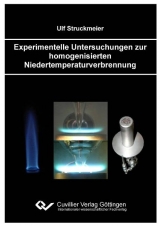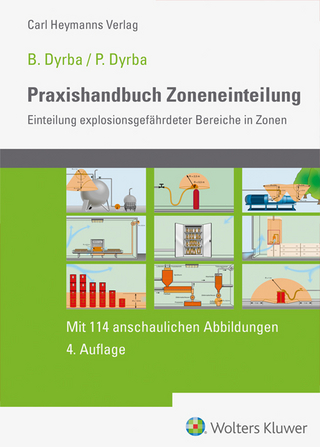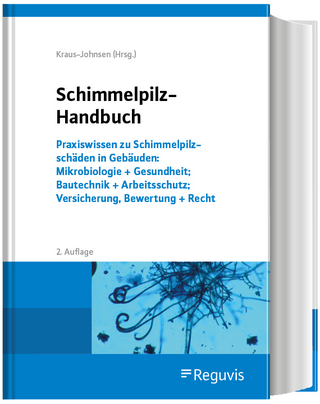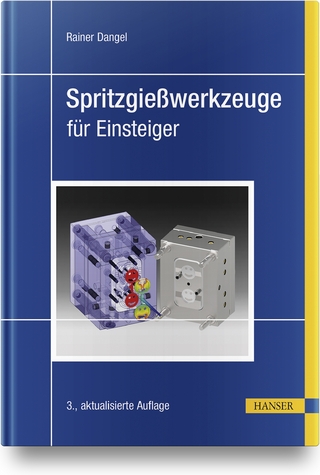Experimentelle Untersuchungen zur homogenisierten Niedertemperaturverbrennung
Seiten
2009
|
1., Aufl.
Cuvillier, E (Verlag)
978-3-86955-200-2 (ISBN)
Cuvillier, E (Verlag)
978-3-86955-200-2 (ISBN)
- Titel ist leider vergriffen;
keine Neuauflage - Artikel merken
Demands for cleaner and more efficient combustion processes are being answered by the development of new combustion technologies and by the use of novel fuels. Especially, low-temperature combustion strategies are advocated to reduce NOx and soot emissions, and biofuels – mostly oxygenated compounds – are discussed to reduce soot and carbon dioxide emissions. The experimental investigation of these modern aspects of combustion chemistry from a fundamental point of view is the main objective of this study.
To accomplish this task, a new molecular-beam mass spectrometer (MBMS) was designed and optimized. The system offers the opportunity to use both electron ionization (EI) and photo-ionization (PI) to detect trace species in flames. Additionally, the apparatus is accessible for optical analysis techniques like laser induced fluorescence (LIF). Future application to other experiments are possible, including pyrolysis or photolysis processes.
MBMS systems are ideally suited to simultaneously measure all stable and radical species present at a certain location of a flame. In the present study, one-dimensional flat flames, in which species composition and gas temperature only depend on the distance from the burner surface, were used to study flame chemistry at the desired conditions. However, in contrast to optical techniques such as LIF, absorption spectroscopy or chemiluminescence detection, mass spectrometric measurements are inevitably invasive and may cause a
significant distortion of the flame to be analyzed.
Therefore, perturbations in flame-sampling mass spectrometry, caused by the quartz cone sampling probe, were analyzed. Depending on parameters such as orifice diameter and cone angle, these nozzles are suspected to alter the flame, leading to systematic errors. In previous studies, independent variations of important parameters in flame-sampling were not performed. In most cases, the sampling influences were not sufficiently well characterized. In this study, sampling cone angle, orifice diameter and nozzle–skimmer distance were varied systematically and the resulting errors were quantified. Specifically, large cone angles (>45°) lead to a significant distortion of the flame by attachment. In contrast to previous studies, orifice diameters were found to have no measurable effect on experimental data. The variation of nozzle–skimmer distance in the MBMS system reveals that mass discrimination effects are only relevant for the detection efficiency of H2 and can be attributed to radial diffusion. Due to the calibration procedures normally used in flame experiments, this mass discrimination is not relevant. To minimize the interaction of sampling cone and flame in future experiments, small cone angles (≤45°) are preferred, while orifice diameter and nozzle–skimmer distance can be adjusted to optimize signal intensity.
Low-temperature combustion is a promising technology which can be applied to internal combustion engines and stationary gas turbines. However, in the regime in which both NOx and hydrocarbon/soot emissions are low, oscillations caused by thermo-acoustic and thermo-kinetic feedback processes are likely to occur which may prevent efficient operation of technical combustion devices. To cope with these oscillations, adaptive control mechanisms are developed, using the concept of model-based predictive control. These control mechanisms require simplified kinetic models which describe the relevant combustion chemistry at low temperatures. The present study contributes to these efforts by providing experiments for the fundamental study of combustion processes and for the validation of kinetic mechanisms in the regime of low-temperature combustion. The kinetic mechanisms can then be reduced to provide the desired simplified models for adaptive control mechanisms. Low-temperature combustion at atmospheric pressure was achieved in highly diluted methane flames using 90–95% argon which simulates exhaust gas recirculation.
Burner-stabilized flat flames, which are accessible for mass spectrometric or optical analysis, were generated by preheating this highly diluted mixture to near-lightoff temperature. First measurements with a new burner, which was developed for this specific purpose, indicate that under preheating conditions, partially premixed flames are likely to be formed. For the first time, temperatures as low as 1300–1400K are achieved in burner-stabilized flat flame experiments. In a second experiment, premixed highly diluted combustible mixtures were heated externally (300–1170 K) in a flow reactor, while gas temperatures and exhaust gas composition were monitored. The reactor is inaccessible for optical techniques and permits to measure only stable exhaust gas species. The experimental results indicate that combustion takes place in a highly homogeneous mixture, and catalytic wall effects are negligible. Depending on the applied temperature ramp of the external heating, the regime of cool flames is accessible.
As part of a larger study of the effect of oxygenated fuel additives, low-pressure ethanoldoped propene flames were analyzed by EI-MBMS. Gradually increasing the ethanol fraction of the fuel mixture from 0–100 %, a smooth transition from olefin to alcohol comiv bustion chemistry was observed. With increasing ethanol fraction, peak mole fractions of typical benzene precursor species decrease almost linearly, while aldehyde mole fractions increase significantly. Comparing these results with dimethyl ether (DME)-doped propene flames that were analyzed by PI-MBMS under the same conditions, it was found that differences between both sets of flames can be explained by the fuel-specific combustion chemistry of the two C2H6O isomers. Fuel structure has a significant impact on the combined intermediate species pool fed by both fuels, propene and ethanol or DME.
To accomplish this task, a new molecular-beam mass spectrometer (MBMS) was designed and optimized. The system offers the opportunity to use both electron ionization (EI) and photo-ionization (PI) to detect trace species in flames. Additionally, the apparatus is accessible for optical analysis techniques like laser induced fluorescence (LIF). Future application to other experiments are possible, including pyrolysis or photolysis processes.
MBMS systems are ideally suited to simultaneously measure all stable and radical species present at a certain location of a flame. In the present study, one-dimensional flat flames, in which species composition and gas temperature only depend on the distance from the burner surface, were used to study flame chemistry at the desired conditions. However, in contrast to optical techniques such as LIF, absorption spectroscopy or chemiluminescence detection, mass spectrometric measurements are inevitably invasive and may cause a
significant distortion of the flame to be analyzed.
Therefore, perturbations in flame-sampling mass spectrometry, caused by the quartz cone sampling probe, were analyzed. Depending on parameters such as orifice diameter and cone angle, these nozzles are suspected to alter the flame, leading to systematic errors. In previous studies, independent variations of important parameters in flame-sampling were not performed. In most cases, the sampling influences were not sufficiently well characterized. In this study, sampling cone angle, orifice diameter and nozzle–skimmer distance were varied systematically and the resulting errors were quantified. Specifically, large cone angles (>45°) lead to a significant distortion of the flame by attachment. In contrast to previous studies, orifice diameters were found to have no measurable effect on experimental data. The variation of nozzle–skimmer distance in the MBMS system reveals that mass discrimination effects are only relevant for the detection efficiency of H2 and can be attributed to radial diffusion. Due to the calibration procedures normally used in flame experiments, this mass discrimination is not relevant. To minimize the interaction of sampling cone and flame in future experiments, small cone angles (≤45°) are preferred, while orifice diameter and nozzle–skimmer distance can be adjusted to optimize signal intensity.
Low-temperature combustion is a promising technology which can be applied to internal combustion engines and stationary gas turbines. However, in the regime in which both NOx and hydrocarbon/soot emissions are low, oscillations caused by thermo-acoustic and thermo-kinetic feedback processes are likely to occur which may prevent efficient operation of technical combustion devices. To cope with these oscillations, adaptive control mechanisms are developed, using the concept of model-based predictive control. These control mechanisms require simplified kinetic models which describe the relevant combustion chemistry at low temperatures. The present study contributes to these efforts by providing experiments for the fundamental study of combustion processes and for the validation of kinetic mechanisms in the regime of low-temperature combustion. The kinetic mechanisms can then be reduced to provide the desired simplified models for adaptive control mechanisms. Low-temperature combustion at atmospheric pressure was achieved in highly diluted methane flames using 90–95% argon which simulates exhaust gas recirculation.
Burner-stabilized flat flames, which are accessible for mass spectrometric or optical analysis, were generated by preheating this highly diluted mixture to near-lightoff temperature. First measurements with a new burner, which was developed for this specific purpose, indicate that under preheating conditions, partially premixed flames are likely to be formed. For the first time, temperatures as low as 1300–1400K are achieved in burner-stabilized flat flame experiments. In a second experiment, premixed highly diluted combustible mixtures were heated externally (300–1170 K) in a flow reactor, while gas temperatures and exhaust gas composition were monitored. The reactor is inaccessible for optical techniques and permits to measure only stable exhaust gas species. The experimental results indicate that combustion takes place in a highly homogeneous mixture, and catalytic wall effects are negligible. Depending on the applied temperature ramp of the external heating, the regime of cool flames is accessible.
As part of a larger study of the effect of oxygenated fuel additives, low-pressure ethanoldoped propene flames were analyzed by EI-MBMS. Gradually increasing the ethanol fraction of the fuel mixture from 0–100 %, a smooth transition from olefin to alcohol comiv bustion chemistry was observed. With increasing ethanol fraction, peak mole fractions of typical benzene precursor species decrease almost linearly, while aldehyde mole fractions increase significantly. Comparing these results with dimethyl ether (DME)-doped propene flames that were analyzed by PI-MBMS under the same conditions, it was found that differences between both sets of flames can be explained by the fuel-specific combustion chemistry of the two C2H6O isomers. Fuel structure has a significant impact on the combined intermediate species pool fed by both fuels, propene and ethanol or DME.
| Sprache | deutsch |
|---|---|
| Einbandart | kartoniert |
| Themenwelt | Technik |
| Schlagworte | Hardcover, Softcover / Technik/Chemische Technik • Verbrennungsforschung, Niedertemperatur, |
| ISBN-10 | 3-86955-200-X / 386955200X |
| ISBN-13 | 978-3-86955-200-2 / 9783869552002 |
| Zustand | Neuware |
| Haben Sie eine Frage zum Produkt? |
Mehr entdecken
aus dem Bereich
aus dem Bereich
Praxiswissen zu Schimmelpilzschäden in Gebäuden: Mikrobiologie, …
Buch | Hardcover (2024)
Reguvis Fachmedien (Verlag)
99,00 €
